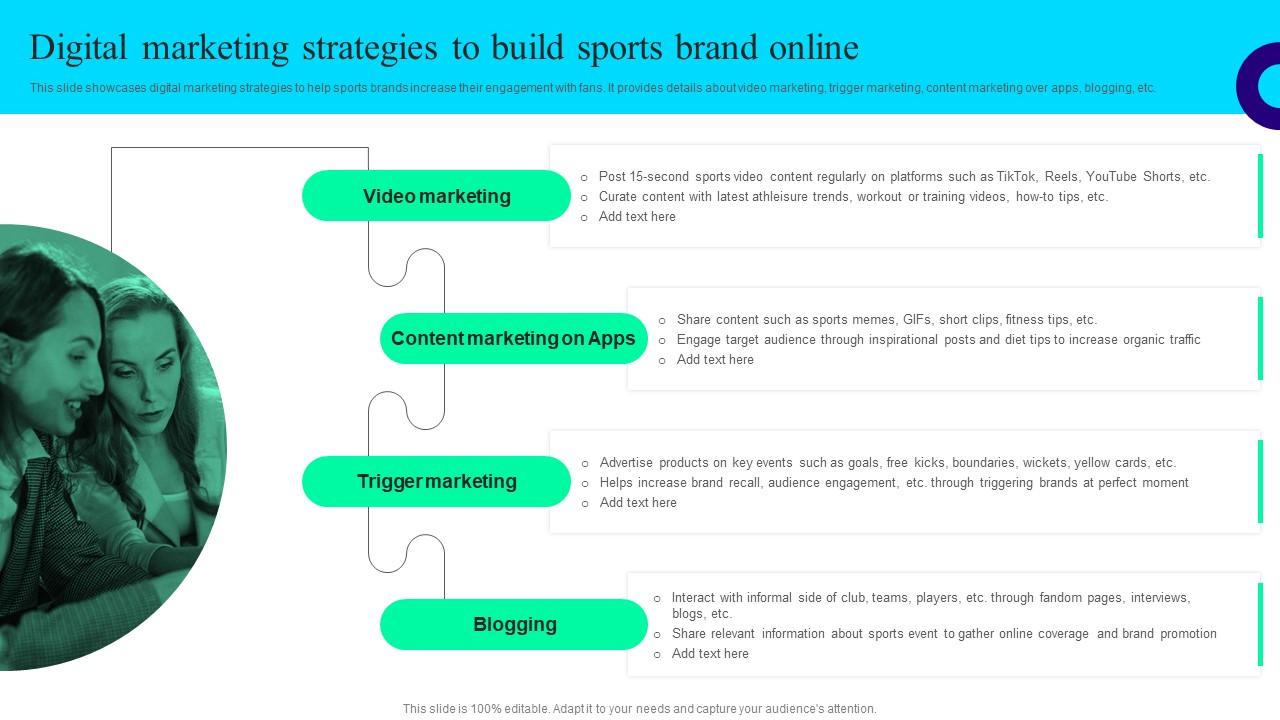Effective Marketing Techniques for Selling Subscription Based Digital Services is your ultimate guide to navigating the thriving landscape of digital service subscriptions. In a market that’s rapidly evolving, understanding what makes subscription models unique is crucial for success. With their distinct characteristics and numerous advantages for both consumers and businesses, subscription-based services are reshaping how products and services are consumed.
This exploration will illuminate the path to effective strategies that captivate audiences and drive sales.
This guide will walk you through essential components like identifying target audiences, crafting pricing strategies, and employing the most effective marketing channels. You’ll discover how content marketing can enhance subscriber engagement while also learning the critical importance of customer retention. With insights into analytics and strategic partnerships, this comprehensive overview equips you with the tools to excel in the subscription-based digital service market.
Understanding Subscription-Based Digital Services
Subscription-based digital services have transformed the way consumers access and enjoy digital content. From streaming platforms to software solutions, these services allow users to enjoy continuous access to their favorite products without purchasing them outright. This business model has gained immense popularity, reflecting changing consumer preferences towards convenience, flexibility, and cost-effectiveness.
Subscription-based digital services are characterized by a recurring payment model, which differentiates them significantly from traditional sales where consumers pay a one-time fee for ownership. This model often includes features such as tiered pricing, free trials, and cancellation options, making it more attractive for budget-conscious consumers. Moreover, subscription models often encourage loyalty and foster a steady revenue stream for businesses, allowing them to plan and allocate resources more effectively.
Key Characteristics of Subscription Models
Understanding the distinctive features of subscription-based models is essential for recognizing their market significance. These characteristics include:
- Recurring Revenue: Unlike traditional sales, which generate revenue from one-time purchases, subscription models ensure consistent cash flow through regular billing cycles.
- Access Over Ownership: Consumers gain access to services rather than owning products, which is particularly appealing in the digital landscape where updates and new content are continually released.
- Flexible Pricing: Many subscription services offer varied pricing tiers based on features or usage, catering to different consumer needs and making services more accessible.
- Customer Engagement: Subscription services often foster ongoing relationships with customers, providing opportunities for continuous engagement through personalized content and tailored experiences.
Benefits for Consumers and Businesses
The advantages of subscription-based digital services extend beyond mere convenience. They provide tangible benefits for both users and providers:
- Cost Efficiency: For consumers, subscriptions can reduce upfront costs. For instance, streaming services allow access to vast libraries of content for a fraction of the cost of purchasing individual titles.
- Convenience and Flexibility: Users enjoy the flexibility of access on multiple devices, alongside the convenience of managing subscriptions with easy cancellation options.
- Consistent Updates: Businesses can continuously improve their offerings, providing consumers with the latest features and content without requiring additional purchases.
- Enhanced Customer Loyalty: Subscription models encourage businesses to prioritize customer satisfaction, resulting in improved retention rates and lower churn.
“Subscription-based services are not just about convenience; they represent a shift in consumer behavior towards valuing access over ownership.”
Target Audience Identification
Identifying the right target audience is crucial for the success of subscription-based digital services. Understanding the demographics and behaviors of potential subscribers allows businesses to tailor their offerings and marketing efforts effectively. This segment delves into the key demographics, customer behavior, and the creation of a customer persona that represents the ideal subscriber.
Defining Target Demographics
Target demographics for subscription-based digital services encompass various age groups, income levels, and lifestyle preferences. Companies must analyze these factors to accurately pinpoint their audience.
- Age Groups: A significant portion of subscribers often falls within the 18-34 age range, as younger generations are more inclined towards digital consumption. For instance, platforms like Netflix and Spotify primarily attract millennials and Gen Z, who value accessibility and variety.
- Income Levels: Middle to upper-income households are more likely to invest in subscription services. For example, consumers willing to spend on premium services, such as Adobe Creative Cloud, typically belong to the higher income bracket.
- Lifestyle Preferences: Audiences interested in convenience and continuous access to content are prime targets. Digital fitness services, such as Peloton, cater to health-conscious individuals seeking flexible workout solutions.
Analyzing Customer Behavior and Preferences
Understanding customer behavior and preferences is vital for designing offerings that resonate. Subscription-based services often harness data analytics to observe trends and habits.
- Frequency of Use: Regular engagement indicates a strong affinity for the service. For instance, users of streaming services may watch several hours of content weekly, leading to increased retention rates.
- Content Consumption Patterns: Subscribers often exhibit specific preferences for genres and types of content, which companies can leverage to personalize recommendations.
- Churn Rates: Monitoring why customers unsubscribe can provide valuable insights into service improvements. For example, if users cite lack of new content as a reason for leaving, services need to innovate constantly.
Creating a Customer Persona
A customer persona is a fictional character that embodies the traits of an ideal subscriber. This persona can guide marketing strategies and product development.
“The ideal subscriber persona provides clarity and direction for product offerings.”
The following Artikels a sample customer persona for a subscription-based fitness app:
| Attribute | Description |
|---|---|
| Name | Fit Fiona |
| Age | 28 |
| Occupation | Marketing Manager |
| Income | $70,000/year |
| Motivations | Desires a convenient way to maintain fitness |
| Preferred Features | On-demand workouts, live classes, community engagement |
| Challenges | Struggles with time management and motivation |
This persona helps the business understand Fit Fiona’s needs and tailor the digital service to enhance user experience, ensuring a higher rate of subscription retention.
Effective Pricing Strategies: Effective Marketing Techniques For Selling Subscription Based Digital Services
Understanding how to price subscription-based digital services effectively can be the key to driving user acquisition and retention. A well-structured pricing strategy not only attracts potential customers but also ensures the long-term viability of your service. In this section, we will explore various pricing models and psychological tactics that can significantly enhance subscription sign-ups.
Pricing Models for Subscription Services
There are several pricing models that businesses can implement to cater to different market segments and consumer needs. Selecting the right model can lead to increased customer satisfaction and revenue. Below are some widely used pricing strategies:
- Tiered Pricing: This model offers multiple subscription levels that provide varying features and benefits. Customers can choose a plan that best suits their needs, which enhances user satisfaction. For instance, streaming services often offer basic, standard, and premium tiers, each unlocking different levels of content access and quality.
- Freemium Model: This strategy provides a basic version of the product for free while charging for premium features. This approach engages users and helps them build familiarity with the service before committing to a paid plan. Notable examples include software platforms like Dropbox and Spotify.
- Pay-Per-Use: In this model, users are charged based on their actual consumption of the service. This pricing strategy is common in cloud services where customers pay for the resources they use, making it attractive for businesses with fluctuating needs.
Psychological Pricing Tactics
Psychological pricing leverages consumer behavior to create an impression of value and affordability, influencing their decision to subscribe. Here are some effective tactics to consider:
- Charm Pricing: Setting prices just below a round number, like $9.99 instead of $10, can make products appear significantly cheaper. This subtle change can have a profound impact on consumer perception.
- Anchoring: Presenting a higher-priced option alongside a standard option can make the latter seem more attractive. For example, if a service lists a premium plan at $49 and a basic plan at $29, the basic plan appears to be a better deal relative to the higher-priced alternative.
- Decoy Pricing: Introducing an additional option that is less attractive can steer customers toward the desired product. For instance, if a service offers a monthly plan for $10, an annual plan at $100, and a decoy monthly plan at $15, many will gravitate towards the annual plan to save money.
Examples of Successful Pricing Strategies
Several leading subscription services have effectively implemented pricing strategies that resonate with their target audience. Here are a few examples:
- Netflix: The tiered pricing structure allows users to choose a plan based on their streaming needs, with options for standard definition, HD, and ultra HD, catering to different consumer preferences and budgets.
- Adobe Creative Cloud: Their freemium model allows users to access certain features for free, while subscriptions for the full suite drive conversion through perceived high value.
- Amazon Prime: Amazon employs a combination of tiered pricing and decoy pricing by offering monthly and annual plans, making the annual plan an attractive option due to cost savings over time.
By understanding and applying these effective pricing models and psychological tactics, businesses can enhance their prospects of success in the competitive landscape of subscription-based digital services.
Marketing Channels for Promotion
In today’s competitive landscape, choosing the right marketing channels is crucial for promoting subscription-based digital services effectively. The right channels not only enhance visibility but also drive engagement and conversions, ensuring a steady stream of subscribers. This section delves into the most effective digital marketing channels and provides strategies to harness their full potential.
Effective Digital Marketing Channels
Identifying suitable digital marketing channels is fundamental for reaching potential subscribers. Each channel offers unique advantages that can be tailored to your target audience. Below are key channels for promoting subscription services:
- Social Media: Platforms like Facebook, Instagram, LinkedIn, and Twitter are invaluable for connecting with users. They facilitate targeted advertising, community engagement, and valuable feedback.
- Email Marketing: A powerful tool for nurturing leads, personalized emails can significantly increase conversion rates by keeping potential subscribers informed and engaged.
- Search Engine Marketing (SEM): Utilizing both paid and organic strategies, SEM helps in capturing the attention of users actively searching for services similar to yours.
- Content Marketing: Creating valuable content not only positions your brand as an authority but also attracts organic traffic and builds trust with potential subscribers.
- Affiliate Marketing: Collaborating with influencers or affiliates can expand your reach and tap into established audiences, driving conversion through trusted recommendations.
Leveraging Social Media for Engagement
Social media platforms play a vital role in attracting and engaging potential subscribers. Crafting a solid social media strategy can help in building brand loyalty and community. The following strategies can be employed:
- Engaging Content: Post interactive content like polls, quizzes, and live sessions to foster engagement and create a sense of community.
- Targeted Ads: Utilize advanced targeting features to reach specific demographics, interests, and behaviors, ensuring your promotions hit the right audience.
- User-Generated Content: Encourage your existing subscribers to share their experiences. This not only provides authentic testimonials but also fosters trust.
- Influencer Partnerships: Collaborate with social media influencers to extend your reach and lend credibility to your offerings.
The Role of Email Marketing in Nurturing Leads
Email marketing serves as a critical tool in nurturing leads and converting them into loyal subscribers. An effective email campaign can significantly impact your subscription service’s growth. Consider these strategies:
- Segmentation: Segment your audience based on behavior, preferences, or demographics to send personalized messages that resonate.
- Value-Driven Content: Provide valuable content through newsletters, including tips, industry insights, and exclusive offers to keep your audience engaged.
- A/B Testing: Experiment with different subject lines, layouts, and calls-to-action to determine what resonates best with your audience.
- Automated Workflows: Implement automated email workflows for onboarding new subscribers and nurturing leads through targeted follow-ups.
“Effective use of digital marketing channels can transform your subscription service’s reach and engagement, paving the way for sustained growth.”
Content Marketing Techniques
Developing a robust content marketing strategy is essential for subscription-based digital services. By crafting a comprehensive content marketing plan that aligns with your offerings, you can engage your audience effectively and retain subscribers over time. Valuable content serves as the cornerstone of your marketing efforts, fostering loyalty and enhancing the customer experience.Providing valuable content is crucial for retaining subscribers, as it keeps them informed and engaged with your services.
This not only adds value to their subscription but also helps in building a community around your brand. Subscribers are more likely to renew their subscriptions when they perceive that they are gaining insights, knowledge, or entertainment that enriches their lives.
Content Marketing Plan Alignment
A well-structured content marketing plan should be tailor-made to complement your subscription service offerings. This alignment increases the relevance of your content and resonates with your audience. Here are essential components of an effective content marketing plan:
- Define Goals: Establish clear objectives that you aim to achieve with your content marketing efforts, such as increasing subscriber retention or enhancing brand awareness.
- Target Audience Insights: Utilize analytics to understand the demographics, preferences, and behaviors of your target audience, allowing for more tailored content creation.
- Content Types: Diversify your content by incorporating blog posts, videos, infographics, and podcasts to cater to different audience preferences.
- Content Calendar: Develop a content calendar to ensure regular publication of content while aligning with seasonal trends or service updates.
- Performance Metrics: Set key performance indicators (KPIs) to measure the success of your content marketing strategy, such as engagement rates, conversion rates, and subscriber growth.
Valuable Content for Subscriber Retention, Effective Marketing Techniques for Selling Subscription Based Digital Services
Valuable content is essential for keeping subscribers engaged and satisfied with your service. By consistently delivering high-quality content, you foster a sense of trust and loyalty among your audience. Here are some strategies to implement:
“Engaged subscribers are loyal subscribers.”
- Informative Resources: Create guides, tutorials, and how-to articles relevant to your service, providing practical value that subscribers can utilize.
- Exclusive Content: Offer subscribers access to premium content, such as expert interviews or advanced training, that is not available to non-subscribers.
- Community Engagement: Encourage subscriber participation through comments, feedback, and community discussions, making them feel valued and heard.
- Personalization: Tailor content recommendations based on subscriber preferences, ensuring that the information presented is relevant and engaging.
Enhancing Engagement Through Various Mediums
Utilizing various content formats can significantly enhance subscriber engagement. Each format offers unique advantages, allowing for diverse approaches to content delivery. Here’s how to leverage blogs, videos, and webinars effectively:
- Blogs: Publish regular blog posts that address relevant topics in your industry, share insights, and provide thought leadership, encouraging subscribers to engage and share their opinions.
- Videos: Create engaging video content that demonstrates your services, shares customer testimonials, or offers behind-the-scenes looks at your operations, appealing to visual learners.
- Webinars: Host interactive webinars that feature valuable discussions, expert panels, or Q&A sessions, providing subscribers with opportunities to learn and engage directly with your brand.
By implementing these content marketing techniques, subscription-based digital services can create a loyal subscriber base and stand out in a competitive market. Remember, the key is to consistently offer valuable, engaging, and relevant content that meets the needs and interests of your audience.
Customer Retention Strategies

In the competitive landscape of subscription-based digital services, retaining customers is paramount to long-term success. Effective customer retention strategies not only enhance customer loyalty but also significantly reduce churn rates, ensuring a stable revenue stream. By focusing on customer feedback, loyalty programs, and targeted tactics, businesses can create a more satisfying experience for subscribers.Customer feedback is a critical component for improving service offerings.
Actively seeking and implementing feedback can lead to more tailored services that meet customer needs. This approach fosters trust and satisfaction, which are essential for maintaining subscriptions.
Key Tactics for Improving Customer Retention
Implementing specific tactics can significantly enhance customer retention rates. Below are key strategies that can be effectively utilized in subscription-based services:
- Regular Communication: Stay connected with your subscribers through newsletters, updates, and personalized messages. Regular communication keeps your service top-of-mind and enhances customer engagement.
- Customer Support: Provide exceptional customer support through multiple channels, such as chat, email, or phone. Quick and helpful responses can turn a potentially negative experience into a positive one.
- Personalization: Use data analytics to understand customer preferences and tailor services accordingly. Personalized recommendations enhance the user experience and encourage longer subscriptions.
- Exclusive Content: Offer subscribers exclusive content or features that are not available to non-subscribers. This creates a sense of value and encourages renewals.
- Regular Updates: Continuously improve and update your service based on user feedback to keep the offering fresh and engaging, thus retaining interest over time.
Importance of Customer Feedback
The significance of customer feedback cannot be understated. It serves as a direct line to understanding subscriber needs and expectations. By implementing a structured feedback system, businesses can dramatically improve their offerings. The use of surveys, feedback forms, and customer interviews can unearth valuable insights.
“Listening to customers is the first step in building a loyal subscriber base.”
When feedback is collected, it should be analyzed regularly to identify trends and areas for improvement. Implementing changes based on this feedback not only enhances service quality but also demonstrates to customers that their opinions matter.
Loyalty Programs and Incentives
Creating effective loyalty programs is an excellent way to encourage renewals and enhance customer retention. These programs can foster a sense of belonging and reward subscribers for their commitment. Here are some effective methods to design loyalty programs:
- Points System: Implement a points-based system where subscribers earn points for every month they remain subscribed. These points can be redeemed for discounts or exclusive content.
- Referral Bonuses: Encourage subscribers to refer friends and family by offering incentives such as discounts or additional service features for successful referrals.
- Anniversary Rewards: Celebrate milestones with subscribers by offering special discounts or gifts on subscription anniversaries, making them feel valued.
- Tiered Membership Levels: Create different membership levels that provide increasing benefits and rewards based on the duration of the subscription. This encourages customers to remain subscribed longer to achieve higher tiers.
Incorporating these customer retention strategies can transform the subscriber experience, leading to increased loyalty and decreased churn rates for subscription-based digital services.
Analytics and Performance Metrics
Measuring the success of your subscription-based marketing campaigns is crucial for optimizing your strategies and ensuring the growth of your digital services business. Understanding and leveraging key performance metrics allows marketers to make informed decisions, driving profitability and enhancing customer experience.The following metrics are essential for evaluating the effectiveness of your subscription marketing efforts. These metrics not only provide insights into customer behavior but also guide you in refining your overall marketing strategy for improved outcomes.
Key Metrics for Success Measurement
When it comes to subscription-based services, certain key metrics emerge as vital indicators of your marketing performance. Monitoring these metrics will help you gauge the health of your business and identify opportunities for growth. Consider the following:
- Customer Acquisition Cost (CAC): This metric reflects the total cost of acquiring a new customer, including marketing and sales expenses. A lower CAC indicates a more efficient acquisition strategy.
- Monthly Recurring Revenue (MRR): MRR is a critical metric that represents the predictable revenue generated from subscriptions every month. It is essential for forecasting growth and sustainability.
- Churn Rate: This metric measures the percentage of subscribers who cancel their subscriptions in a given period. A higher churn rate indicates dissatisfaction and can pinpoint areas for improvement.
- Customer Lifetime Value (CLV): CLV estimates the total revenue expected from a customer throughout their relationship with your business. Maximizing CLV is crucial for driving long-term profitability.
- Engagement Metrics: Metrics such as active users, session duration, and feature usage reveal how customers interact with your service, informing product development and marketing strategies.
Interpreting Customer Data for Strategy Refinement
Analyzing customer data is pivotal in refining marketing strategies. By interpreting the information collected, businesses can make informed decisions that enhance customer engagement and retention. Focus on the following aspects:
- Identify trends in customer behavior, such as preferred usage times and popular features. This information can guide content creation and promotional efforts that resonate with your audience.
- Segment your customer base according to various demographics and behaviors. Understanding different segments allows for tailored marketing messages that increase conversion rates.
- Monitor feedback and reviews to gauge customer satisfaction. Addressing concerns highlighted in feedback can lead to improved customer loyalty and reduced churn.
- Utilize A/B testing to experiment with different marketing tactics and messages. This data-driven approach helps identify what resonates best with your audience.
Setting Up Tracking Tools for Monitoring Metrics
To effectively monitor your subscription metrics, setting up tracking tools is essential. Follow these steps to organize your tracking system:
- Choose analytics software that suits your business needs. Popular options include Google Analytics, Mixpanel, and HubSpot, each offering unique features for tracking user behavior.
- Integrate tracking codes within your subscription service platform. This ensures that all user interactions are captured accurately for analysis.
- Create a dashboard to visualize key performance indicators (KPIs). Customizing your dashboard enables quick access to the most crucial metrics for regular monitoring.
- Establish goals for each metric to measure against. This helps in assessing whether your marketing strategies are performing as expected.
- Regularly review and update your tracking setup based on evolving business needs and market conditions. Continuous improvement is key to staying ahead.
Leveraging Partnerships and Collaborations
In the dynamic landscape of subscription-based digital services, forging partnerships and collaborations can serve as a powerful catalyst for growth. By aligning with complementary businesses, companies can enhance their reach, share resources, and optimize marketing efforts, ultimately leading to increased subscriptions and brand loyalty.The benefits of collaborating with other businesses cannot be overstated. Partnerships enable companies to tap into new customer bases, offering a win-win scenario where both partners can thrive.
Furthermore, shared marketing expenses can lead to more impactful campaigns, while combined expertise can result in innovative solutions that resonate with target audiences.
Successful Marketing Collaborations
Numerous successful examples in the subscription space highlight the effectiveness of strategic partnerships. For instance, Spotify’s collaboration with Hulu allows subscribers to access both streaming services at a discounted rate, attracting a broader audience to both platforms. Similarly, Adobe’s partnership with LinkedIn offers users tailored learning paths for creative skills, enhancing the appeal of their Creative Cloud subscriptions.When considering potential partnerships, it’s essential to approach the process strategically.
Here are some steps to effectively pursue and structure collaborative efforts:
1. Identify Complementary Brands
Look for businesses that offer products or services that align with your subscription model and target audience. The right partner should share similar values and customer demographics.
2. Define Mutual Goals
Clearly Artikel what both parties aim to achieve. Whether it’s increasing subscriber numbers, enhancing brand visibility, or expanding into new markets, having shared objectives ensures that both partners are invested in the partnership’s success.
3. Design Collaborative Campaigns
Create joint marketing initiatives that showcase both brands effectively. This could include co-branded content, special promotional offers for subscribers, or joint webinars and events that highlight the benefits of both services.
4. Leverage Each Other’s Platforms
Utilize social media channels, email newsletters, and websites to promote the partnership. Sharing each other’s audiences can significantly amplify reach and engagement.
5. Monitor and Measure Success
Establish key performance indicators (KPIs) to evaluate the effectiveness of the collaboration. Regular analysis of metrics will help refine strategies and maximize the partnership’s impact.By thoughtfully approaching partnerships and collaborations, businesses can not only enhance their marketing strategies but also create lasting relationships that drive subscription growth and customer loyalty.
Utilizing Customer Testimonials and Reviews
Testimonials and reviews are powerful tools in the digital marketing landscape, especially for subscription-based services. They act as social proof, which helps potential customers feel more secure in their purchasing decisions. By showcasing the positive experiences of existing customers, businesses can build trust and credibility, ultimately leading to increased sales.The impact of social proof on subscription service sales is immense.
According to a study by BrightLocal, 91% of consumers read online reviews, and 84% trust them as much as personal recommendations. This indicates that reviews serve as a vital component in influencing buying behavior. When potential subscribers see authentic feedback from satisfied users, they are more likely to take the leap and commit to a subscription.
Methods to Collect and Showcase Customer Testimonials
Collecting and showcasing testimonials effectively can amplify the positive perception of your subscription services. Here are several methods:
Surveys and Feedback Forms
After a customer has used your service for a specific period, send them a survey requesting their thoughts. Keep it brief and focused on key points like satisfaction, value, and overall experience. This helps gather qualitative data that can be transformed into testimonials.
Incentivized Feedback
Offer incentives like discounts or exclusive content to encourage customers to leave reviews. This not only boosts your testimonial collection but also enhances customer loyalty.
Social Media Engagement
Monitor social media platforms for unsolicited testimonials. Encouraging customers to share their experiences through a branded hashtag can generate authentic reviews that resonate with potential subscribers.
Video Testimonials
Capture short video testimonials from satisfied customers. These provide a personal touch and allow potential customers to see and hear genuine feedback, creating a stronger emotional connection.
Highlighting on Website and Marketing Materials
Showcase testimonials prominently on your website’s homepage, product pages, and promotional materials. Use visually appealing designs to draw attention to customer praise, ensuring it’s easily accessible to potential subscribers.
Managing and Responding to Customer Reviews
A proactive strategy for managing reviews is essential to enhance trust and customer satisfaction. Here are crucial steps for effective management:
Respond Promptly
Address reviews—both positive and negative—within a reasonable timeframe. A prompt response shows that you value customer feedback and care about their experience.
Personalized Replies
Tailor your responses to reflect the specific feedback given. A personalized reply demonstrates genuine interest and fosters a sense of community.
Handling Negative Reviews
Approach negative feedback with empathy. Acknowledge the customer’s concerns and offer a solution or further assistance. This not only helps to resolve the issue but also shows prospective customers that you are committed to improving their experience.
Encouraging More Reviews
Actively encourage satisfied customers to leave reviews after resolving an issue. This creates a balanced representation of your service and can mitigate the impact of negative feedback.
Utilizing Feedback for Improvement
Analyze reviews for recurring themes or concerns. Use this information to make informed adjustments to your service, demonstrating to customers that their feedback leads to real change.
“Customer testimonials are not just endorsements; they are the voice of your satisfied users, guiding new customers through their purchasing journey.”











